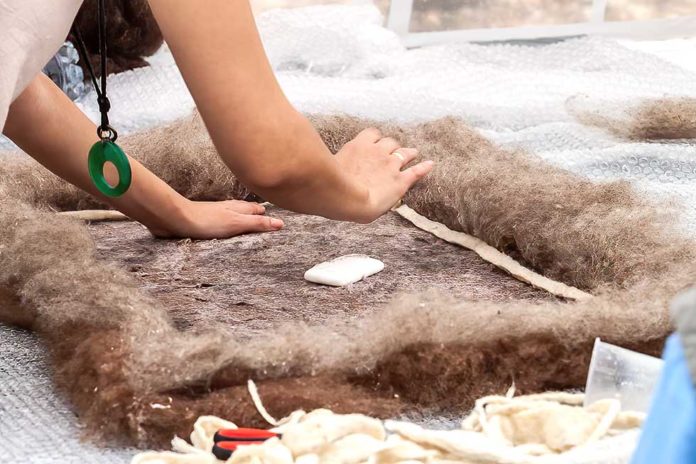Crafting non-woven textiles, known as “felt,” is a time-honored Bulgarian tradition with roots extending far back in history. The earliest written records of felt products in Old Bulgarian date to the 10th-11th centuries, while preserved samples are from the 17th, 18th, 19th, and the first half of the 20th centuries. Strandzha is where this ancient art continues to thrive, primarily using sheep’s wool as the primary raw material. The wool’s unique felting properties make it possible to create textiles without complex machinery or advanced technology.
Felt possesses remarkable heat-insulating and moisture-resistant qualities, which have led to its widespread use throughout Bulgarian history. It has been utilized for bedding, horse-riding without a saddle (known as “tegaltia”, “teltia”, or “stele”), and constructing tents during campaigns. Wool’s ability to trap air and resist water penetration makes it an ideal material for various applications.
The process of creating felt is known as “felting”. A wooden frame is typically set up outdoors, usually in late summer when the warm sun can help them feel dry. The initial step in wool processing involves washing the raw wool to remove organic fats, followed by drying and sorting based on quality.
Learn more about witnessing Bulgarian Felt Art in Sofia in 2025.
Coloring
To add color, the wool is dyed using natural, plant-based dyes. The dyed wool is placed in large clay containers, lukewarm water, and dye plants and left to stand for several days in unburnt manure to maintain a consistent temperature.
The Drandars
Master craftsmen, known as “drandar“, prepare the wool for cutting and patterning by creating wicks of various thicknesses. The middle layer of the felt consists of evenly laid wool or arranged “cudeli“, layered in alternating directions to achieve the desired thickness.
Felt crafting offers a wealth of creative opportunities. Unlike woven fabrics, felt does not require consideration of thread direction, allowing for greater freedom in layering colors and creating abstract patterns. The versatile nature of wool enables artists to “paint” with it, achieving image depth, perspective, and chiaroscuro. Furthermore, wool’s ability to retain volume allows for creating animal figures, accessories, and products with internal cavities, adding a modern touch to this ancient art form.



